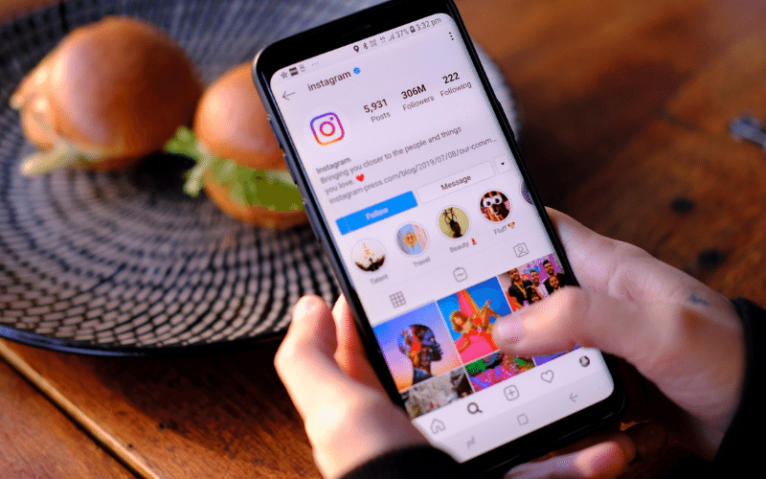Please note, we want to take this opportunity to offer a trigger warning. The rest of this article isn’t for the easily squeamish or early recovery from self-harm or eating disorders. While Instagram’s pro-self-harm fight continues, social media is an ever-evolving tool that many know how to manipulate to their advantage.
Not too long ago, we wrote about a community of Instagram users who share pictures of syringes, crack pipes, heroin, and other hard drugs. They’ve proclaimed themselves the “junkies of Instagram” and seem to have a strange form of pride about their activities.
Today, we’ll discuss the trends about pro-self-harm and eating disorders promoters that use Instagram as their platform.
Graphic Photos Are Not New
Since the internet’s been around, there’ve been people posting inappropriate pictures and advocating for illegal practices. That’s the price that unrestricted access to information brings with it.
However, with the massive rise in popularity of mobile social media apps, this advocating has reached a whole new level. Even with Instagram’s bans and restrictions against specific keywords like #ana, #mia, #thinspo, #proanorexia, #loseweight, and #probulimia, people are still finding ways to post encouraging messages that promote these disorders.
Since the banning of hashtags isn’t the only solution, Instagram is testing the waters to see if eliminating the “likes” feature from their platform will make people more mindful. As Huffington Post’s Lauren Duca says, “…people stop placing value on the ‘likes’ they receive on social networks and begin to redirect that energy in healthier, more appropriate ways” (Medical Daily).
In Instagram’s defense, they’ve put content warnings on all the above terms. When a user searches for, say, #anorexia, a box pops up with an option to continue or learn more about eating disorders.
While there are no hard numbers available on how many people have sought to learn more and seek help from these warnings, it’s a positive step. It’s also more effective than merely banning hashtags.
How Instagram’s Pro-Self-Harm Fight
Let’s take a look at Instagram’s official response and how they’re actively working to promote #recovery in their app. According to Instagram’s Community Guidelines:
“Don’t promote or glorify self-harm: While Instagram is a place where people can share their lives with others through photographs, any account found encouraging or urging users to embrace anorexia, bulimia, or other eating disorders; or to cut, harm themselves, or commit suicide will result in a disabled account without warning. We believe that communication regarding these behaviors to create awareness, come together for support, and facilitate recovery is important, but that Instagram is not the place for active promotion or glorification of self-harm.”
“It is important to note that this guideline does not extend to accounts created to discuss constructively, or personal document experiences that show any form of self-harm where the intention is recovery or open discussion. While we strongly encourage people to seek help for themselves or loved ones who are suffering, we understand the importance of communication as a form of support to create awareness and assist in recovery.”
These are some of the many ongoing efforts the platform takes to make this online community more secure. Of course, this isn’t the only solution to the problem. It takes a collective effort of educational resources, controls on social media platforms, and more to prevent surfacing messages. There are still self-harm websites that promote suicide attempts and other warning signs that might trigger or promote suicidal intent
You can also join Instagram’s pro-self-harm fight. Today, you can genuinely help someone by asking, “How are you?” Social media is meant to connect us at a deeper level. Reach out to a friend you believe might be struggling. Your helping hand might save their life.
Promoting Recovery
It’s not all doom and gloom on Instagram. While there are many pro-eating disorders and self-harm hashtags, there are just as many recovery hashtags.
So, recovery is alive and well on Instagram. The next step is watching this community of positivity blossom and spread. Hopefully, people who are currently taking pro-E.D. photos will see some of the recovery posts.
Imagine raising your hand to speak in a meeting and sharing a story of how Instagram introduced you to recovery rooms. The idea might not be too far off, considering the world of social distancing, online learning, and isolation. If social media can positively impact individuals’ daily lives, then that is the change we can all stand behind.
If you’re in recovery or still struggling, please check out Lighthouse Recovery Institute’s Instagram. We have a sister Instagram just for women, too. Find us at @lighthouserecoveryinstitute and @sobrietyforwomen.
And remember, #WeCanAllChange!
Seeking Help
Eating disorders and self-harm behaviors are prevalent. Overall, almost 30 million Americans will have an eating disorder in their lifetime. Of them, about 26% will attempt suicide or practice self-harm.
Both of these disorders are dangerous mental health conditions that need treatment. If you or someone you know is struggling with these disorders, please reach out for help. At Lighthouse Recovery Institute, while we might be a drug rehab center, we also help those struggling with eating disorders. Reach out today and speak with our caring counselors and therapists to start your journey toward recovery.





